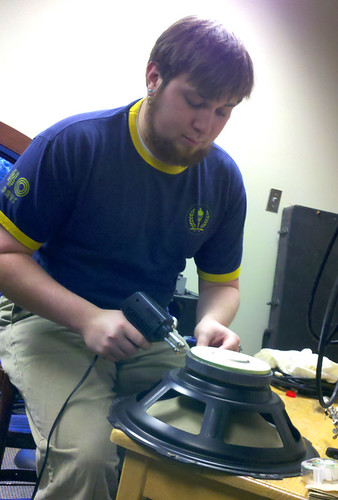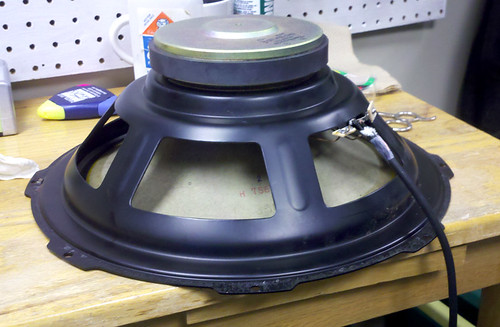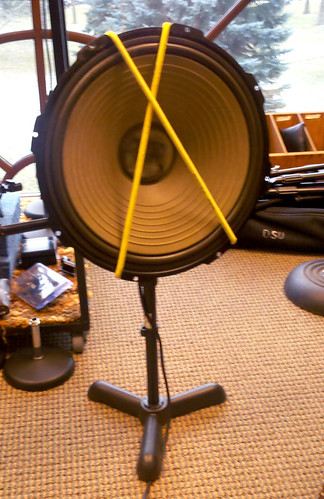Tuesday, November 22, 2011
Musique Concrète
Wednesday, November 9, 2011
Nanocon
I’m frequently solicited for my ability to operate a mixing console. This time around it was to run sound for Gaming Club’s Nanocon. “Nanocon is Madison, South Dakota's premier gaming convention. We host all sorts of role playing games, Magic: the Gathering tournaments, board games, video games, and even a LARP. All games are open to the public, as is the entire convention.” A description quoted from their website.
The work involved was fairly minimal, all of the presentations were speech oriented with a bit of sound from Youtube videos embedded into PowerPoint. The presentations themselves were rather interesting. I learned what it means to be successful in the Game Design industry and how to achieve it. As it turns out it’s not that much different than making it as an aspiring audio engineer.
It was a pretty stress free, paying gig and I could use more of those.
Thursday, September 29, 2011
James Booze Wedding
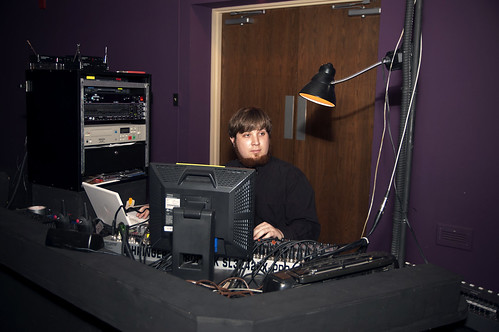
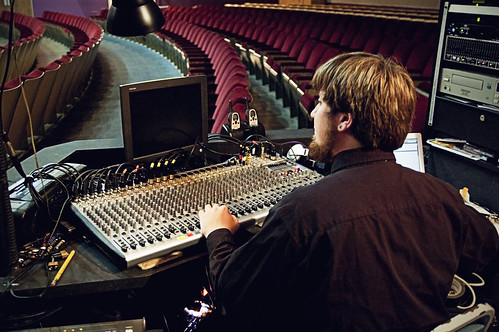
After everything had died down, Pastor Elizabeth came by to give her mic back. She said she felt everything went pretty smoothly, made some small talk and asked if this was my profession. I went on to tell her that I’m still a student but I do stuff on the side to build my resume. She asked if I would contract out to make improvements to her church in the Madison area. I told her I would be happy to and that I was actually looking to do an internship, I gave her a business card and she said she would be in contact.
Hopefully things pan out and I can keep building up the ol’ resume.
Wednesday, July 6, 2011
White Night 2011
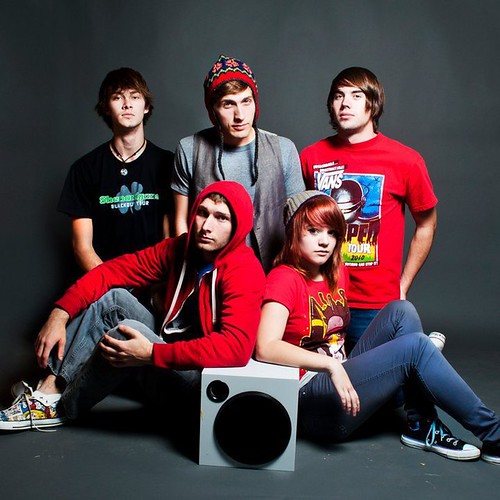
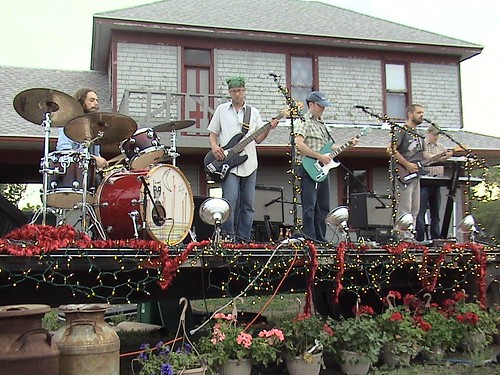
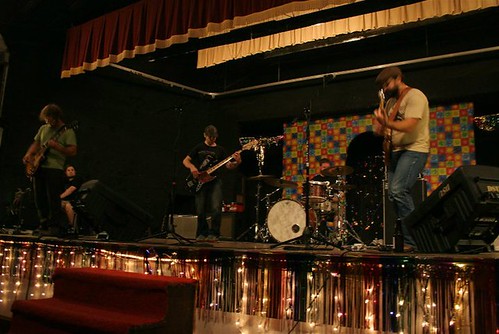
Tuesday, June 28, 2011
Recording Mitchell South Dakota's Kanata
The three band members have a pretty stiff work schedule so our window of opportunity was pretty slim. Adam and Drew arrived into Madison pretty late Monday night. We set up and Adam recorded with his Schecter C-1 Diamond Series guitar out of a Randall RG100SC. I close mic’ed the cab with two Shure SM57s, one at the top of the left cone and one at the bottom of the right cone. I then set up an AKG 214 as a room mic. The different microphones and placements offer a pretty wide variety of tonality so I don’t have to do a bunch of equalizer work and I can get a pretty natural sound. This went into a Digi Pre mic pre-amp and then into a Toft ATB 24-channel mixing console. I like the gain and control the Digi Pre gives and I like the coloration the ATB board adds. Drew went to work with his Schecter Hellraiser V-1 and he utilized a Marshall MG4X12B for its speakers, with the amp of a Peavey 6505+. I used a similar but slightly different mic’ing technique to further aid in giving the guitars separate sonic personalities.
After about six hours we figured we were all too tired to function. I offered them some somewhat illicit sleeping quarters and called it a night. Our goal was to finish recording both guitar parts on the rest of the tracks so they wouldn’t have to haul all their gear back another day. We made quite a bit of progress before breaking for lunch at Skipper’s. After a minor snag or two we managed to complete all guitar recording by 10 PM. Their bass player should have the day off sometime next week and we’ll continue hammering this album into existence.
Sunday, January 9, 2011
Turning a Subwoofer Into a Microphone
I read somewhere that in order to increase the low end in mixes recording engineers will take subwoofers and turn them into microphones. The large Sub Mic or SubKick captures the low frequencies the same way a standard microphone does: the vibration of the diaphragm turns acoustical energy into electrical energy and is interpreted by your mixer as an electrical signal.
Being what I consider to be a very avant garde recording engineer I decided I wanted to try this. I consulted with the audio faculty and they found a three-way speaker cabinet that no one was using and they told me I could use it for fabrication. With the help of one of the instructors cut off the female end of an XLR cable and soldered the wires to the circuit board of the subwoofer. We tested the results and they were everything we hoped and I should have a sample up for listening in the next week or so.
Soldering the XLR cable to the speaker
The XLR cable firmly attached:
The first rendition of the microphone attached to a stand:
Recording Ukulele (09-25-2010)
I chose to use the Audio Technica 4041’s, a pair of small diaphragm pencil condensers, to mic his ukulele. The 4041’s have a boost in the high end of their frequency response curve (1), which I felt would be useful in capturing the brightness of the Ukulele. I decided to use an ADK S-7 to mic his vocals; the S-7 has boost in its low end according to its frequency response curve (2). It also has a bit of a dip in its higher frequencies; I wanted that specifically so that ukulele bleed through wouldn’t be especially bright. Jeremy later made the comment that he really liked how the mic treated his voice.
I showed Jeremy his recording space, explained the process to him, and what I hoped to achieve. He sat down and he began strumming out the chords to Israel Kamakawiwoʻole’s version of Somewhere Over the Rainbow. After he played a few times to warm up he told me a personal story about how much that song meant to him. At that point we decided to make Somewhere Over the Rainbow a focal point of the day. I had Jeremy play through this song four times with mild breaks in between. All the while I would use the talkback mic to communicate what I was doing so Jeremy wouldn’t feel out of the loop. Once we felt like we had a couple of really solid takes of Somewhere Over the Rainbow we moved on to Trouble by Never Shout Never, which we did six takes of before we felt sure we had something solid.
Mixing Somewhere Over the Rainbow was tough to mix as I felt it lacked a strong stereo image. After trying to beef up the ukulele and finding nothing I enjoyed I decided to leave it alone. I moved on to doing a final mix of Trouble, which proved much less difficult. I felt the punch of the vocals plus intermittent clapping made the song strong enough on it’s own without trying to mess with its stereo image. I put a light compression on Jeremy’s vocals using the Bombfactory BF76 compressor and decided to put a subtle reverb on his vocals with the AIR Reverb plug-in. To brighten up the ukulele a bit I used the EQ III Digirack 4 band equalizer and cut the low mids out and gave it a boost in the highs. I got the mix to where I wanted it and put a final compression on the master output using the Maxim Compressor.
The results are these two tracks and I hope you enjoy them:
Trouble by PaulSchipperRecording
Somewhere Over The Rainbow by PaulSchipperRecording
1. http://www.audio-technica.com/cms/wired_mics/b43bffe4d4295274/index.html/
2. http://recordinghacks.com/microphones/ADK/S-7
My Twitter:
@PaulSRecording
Jeremy’s Facebook page:
http://www.facebook.com/profile.php?id=676781539&ref=ts

